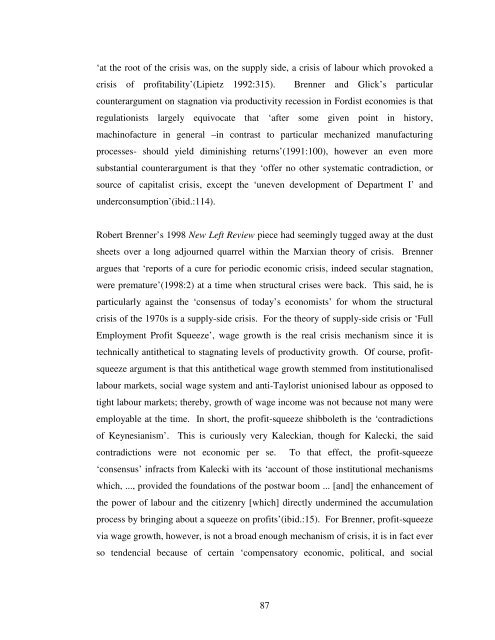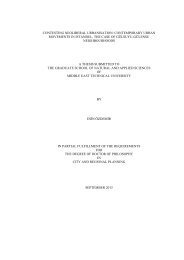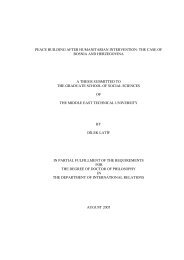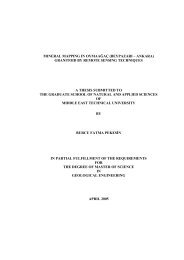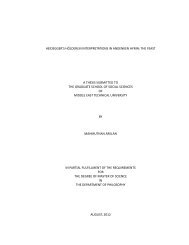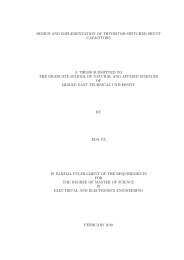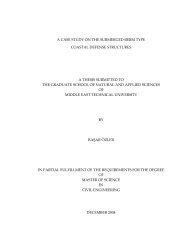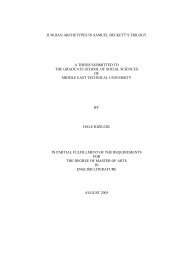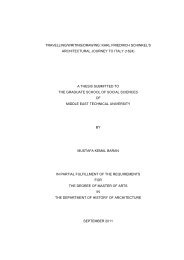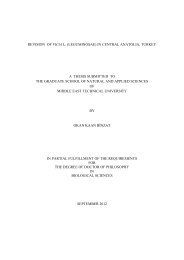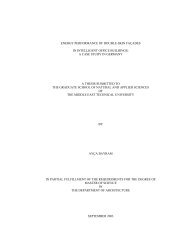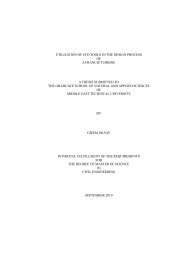View Original - Middle East Technical University
View Original - Middle East Technical University
View Original - Middle East Technical University
You also want an ePaper? Increase the reach of your titles
YUMPU automatically turns print PDFs into web optimized ePapers that Google loves.
‘at the root of the crisis was, on the supply side, a crisis of labour which provoked a<br />
crisis of profitability’(Lipietz 1992:315). Brenner and Glick’s particular<br />
counterargument on stagnation via productivity recession in Fordist economies is that<br />
regulationists largely equivocate that ‘after some given point in history,<br />
machinofacture in general –in contrast to particular mechanized manufacturing<br />
processes- should yield diminishing returns’(1991:100), however an even more<br />
substantial counterargument is that they ‘offer no other systematic contradiction, or<br />
source of capitalist crisis, except the ‘uneven development of Department I’ and<br />
underconsumption’(ibid.:114).<br />
Robert Brenner’s 1998 New Left Review piece had seemingly tugged away at the dust<br />
sheets over a long adjourned quarrel within the Marxian theory of crisis. Brenner<br />
argues that ‘reports of a cure for periodic economic crisis, indeed secular stagnation,<br />
were premature’(1998:2) at a time when structural crises were back. This said, he is<br />
particularly against the ‘consensus of today’s economists’ for whom the structural<br />
crisis of the 1970s is a supply-side crisis. For the theory of supply-side crisis or ‘Full<br />
Employment Profit Squeeze’, wage growth is the real crisis mechanism since it is<br />
technically antithetical to stagnating levels of productivity growth. Of course, profit-<br />
squeeze argument is that this antithetical wage growth stemmed from institutionalised<br />
labour markets, social wage system and anti-Taylorist unionised labour as opposed to<br />
tight labour markets; thereby, growth of wage income was not because not many were<br />
employable at the time. In short, the profit-squeeze shibboleth is the ‘contradictions<br />
of Keynesianism’. This is curiously very Kaleckian, though for Kalecki, the said<br />
contradictions were not economic per se. To that effect, the profit-squeeze<br />
‘consensus’ infracts from Kalecki with its ‘account of those institutional mechanisms<br />
which, ..., provided the foundations of the postwar boom ... [and] the enhancement of<br />
the power of labour and the citizenry [which] directly undermined the accumulation<br />
process by bringing about a squeeze on profits’(ibid.:15). For Brenner, profit-squeeze<br />
via wage growth, however, is not a broad enough mechanism of crisis, it is in fact ever<br />
so tendencial because of certain ‘compensatory economic, political, and social<br />
87


